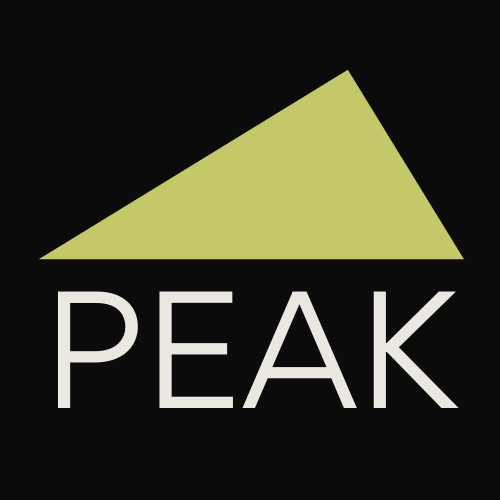Cupping Therapy for Sports Performance and Injury Care
Have you ever seen those red circular bruises on Olympic athletes? Those athletes have been cupped. The suction and negative pressure of cupping loosens muscle fibers and connective tissue (fascia), encouraging blood flow to the muscle and homeopathic sedation of the nervous system. Therapeutic cupping is used to relieve back and neck pain, stiff muscles, and anxiety.
There are two methods of cupping, wet and dry. At PEAK, I use dry cupping in a variety of situations with my athletes, for pain management, and to aid in postsurgical recovery sessions. In dry cupping, there are two main ways that people are treated. 1) Stationary cupping is where the cups are placed and left on for an allotted time, without being moved around. 2) Slide cupping is where the cups are placed on the body and moved around without breaking contact with the skin. This aims to increase circulation and acts as a sort of massage. The cups are usually left on for no longer than ten minutes.
The method is the opposite to massage
When you think about massage therapy, foam rolling, instrument assisted massage and other common treatments apply pressure to the muscle and tissue in towards the body. Cupping is the opposite of that. It lifts the tissue away. The negative pressure and distraction force from lifting away creates internal space that was otherwise compressed. In the body, when one direction hurts or feels threatening, the other direction will often feel better and relieving.
Increase blood flow
Some of what you perceive as muscular or myofascial pain can be from decreased blood flow and decreased oxygenation to an area. When a muscle is tight, active, and turned on it uses oxygen to create energy. If you’re tissue is unable to get enough oxygen, your body will switch to energy systems that don’t require energy. This is a great short-term fix but this anaerobic energy system leaves hydrogen as a cellular byproduct and increases the acidity in the blood. Though it is best for our stomach to be in an acidic environment for digestion and the break down of food, other areas of our body don’t like acidic environments. It releases pain sensitizing chemicals that tell the brain something is wrong. It is a well-designed protective system. That is unless you can’t get the muscle to relax or get blood flow to the area to flush things out.
With cupping therapy, you can visibly see the blood flow changes to the skin and surrounding area as it’s happening. It is likely that this quick rush of blood is part of why you feel so light and airy after a cupping therapy session.
Lymphatic flow
Part of being able to heal is the ability to clear out cellular waste products. When you get injured, inflammation rushes to the area to repair the damage. It repairs damaged cells, but there is a host of waste that needs cleared out. Cellular waste byproducts will get filtered and then excreted out of the body through veins and lymphatic vessels. This is the function of your Lymphatic System. As you may imagine, problems might exist if something is restricting the flow of waste fluid.
Cupping gives us a way to create a pulling force near the surface of the skin that can help clear out the waste products. This is a primary reason why I will often use cupping in conjunction with a Lymphatic Drainage Massage.
Capillary regeneration and immune response
If you have seen pictures of cupping you have also seen pictures of the bruises it can leave. These bruises are a result of capillary rupture. Damaged capillaries from cupping tend to occur in areas of tightness. These damaged or weakened vessels may rupture more easily than healthy and pliable tissue. With repeated cupping, over time the rupture and subsequent repair can lead to true tissue changes that can have long term benefits.
This micro rupture creates its own immune and inflammatory response for healing. This may be a useful mechanism when dealing with chronic pain and you need to restart an immune response to an area.
Further reading
A research paper published on PUBMED in 2012 entitled "An Updated Review of the Efficacy of Cupping Therapy" found that the use of cupping therapy significantly improved the success rates in treating a number of illnesses. This included facial paralysis (Bell palsy), cough and dyspnea, acne, lumbar disc herniation, herpes zoster, and cervical spondylosis.
Another PUBMED article titled “Influence of quantified dry cupping on soft tissue compliance in athletes with myofascial pain syndrome” showed similar positive effects. The study included 40 baseball players with myofascial pain syndrome were recruited to validate the benefits of cupping therapy. All participants received cupping with a negative pressure for 15 minutes each time, twice a week, for 4 weeks. The 4-week cupping intervention resulted in an even greater increase in soft tissue lift in the myofascial pain. Shoulder and upper extremity function were also significantly improved.
This quantitative cupping monitoring system could immediately assess tissue compliance and facilitate the improvement of soft tissues after cupping therapy. Hence, it can be used in athletes to improve their functional recovery and maintain soft tissues health, especially during the off-season period.
In other words, cupping therapy is quite an amazing treatment for athletes!
If you are an athlete looking to add to your recovery care protocol and take your training to the next level, I can help you achieved your goal. Together we will keep your body healthy and moving functionally well so you can continue to play your best game, pain free, as long as possible.


